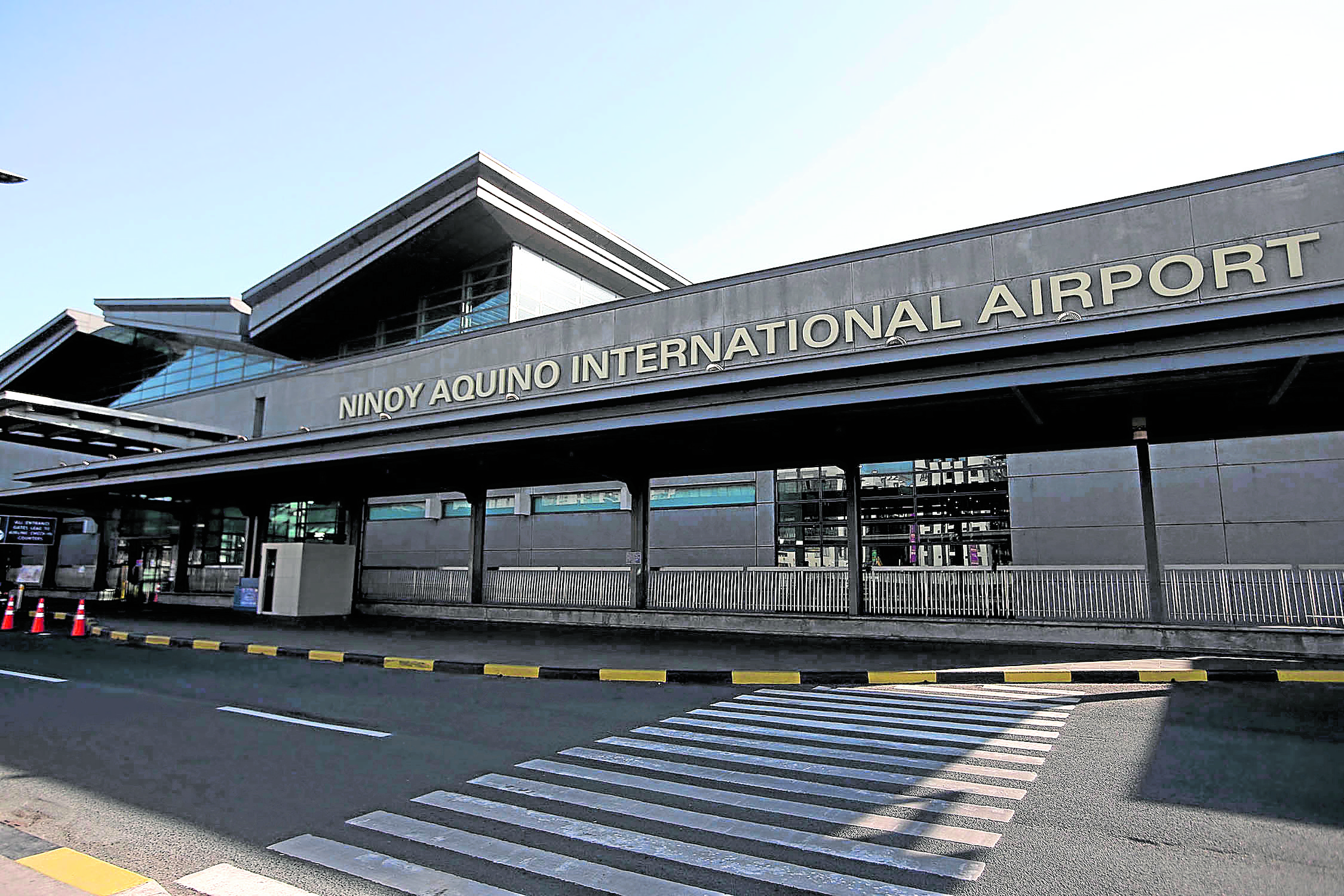MANILA, Philippines — Two of the cooling towers of Ninoy Aquino International Airport (Naia) Terminal 3 in Pasay City have stopped working, leaving passengers and airport personnel “sweaty” since Saturday, as one of them put it, while Metro Manila continued to experience hot temperatures this week.
As of Sunday, repairs were ongoing, with only four of the six cooling towers operational at Naia’s busiest and largest terminal, according to the Manila International Airport Authority (MIAA).
“This technical challenge regrettably resulted [in] warmer temperatures inside the terminal. To mitigate the impact, evaporative fans have been strategically placed in critical areas to enhance air circulation and provide localized cooling, offering relief to passengers and staff during this temporary disruption in the air-conditioning system,” the airport operator said in a statement on Saturday.
READ: Marcos to Naia rehab group: Fix airport woes
The MIAA did not give the specific cause for the conking out of its cooling towers, only saying it was due to “a technical issue.”
Passengers at Naia 3 vented on social media about their long waiting time while they were perspiring and short of breath.
“It’s so hot in Naia 3 right now. Can’t your air-conditioning units get to work harder? I may get an asthma attack here,” said one of the departing passengers.
But she also noted that the arrival area had their air conditioning working properly.
“It is hot outside Naia and still hot inside Naia. My ending: Sweaty underarms,” another passenger ranted.
Others resorted to taking out their folders to fan themselves, while some who were more prepared brought out their portable rechargeable fans or trusty folding fans.
READ: Airport repair won’t disrupt operations, says official
Latest discomfort
The MIAA said its “engineering team is actively addressing the situation to restore full functionality of all cooling towers as swiftly as possible. In the meantime, we seek… the understanding of our passengers and stakeholders as we work through this challenge.”
The latest discomfort at Naia came as the airport is in the middle of its two-month maintenance activities to upgrade the electrical systems in the largest and busiest terminal of the country’s main gateway.
Eric Ines, MIAA general manager, even assured the public that the maintenance works from April 2 to May 28 would not impede processing passengers and baggage. He also said lights and air conditioning in major parts of the airport would still be working.
Power fluctuations shut down the air-conditioning system at Naia Terminal 2 on March 27, just as thousands of Filipinos were about to spend the long Holy Week break amid the intense heat of summer worsened by the El Niño phenomenon.
According to the MIAA, the terminal circuit breaker tripped due to high power loads caused by the elevated heat index outside the terminal, which reached 43 degrees Celsius on Saturday.
High temperatures
Based on monitoring by the Philippine Atmospheric, Geophysical and Astronomical Services Administration (Pagasa), a temperature of 38.8ºC was recorded at its Naia station at 2:53 p.m. that day.
This surpassed the previously highest recorded temperature in Metro Manila of 38.6ºC in Port Area, Manila on May 17, 1915.
The temperature at Naia on Saturday was equivalent to a heat index—or what the human body feels like—of 45ºC, which is already at “danger” level, with heat cramps and heat exhaustion likely to happen and heatstroke probable with continued exposure.
On Saturday, the weather bureau recorded higher temperatures in other parts of the country: 40ºC at its Muñoz, Nueva Ecija station, and 39.6ºC at its station in Tuguegarao, Cagayan.
Pagasa said the intense heat experienced in different parts of the country was due to the warm and dry season, exacerbated by the lingering effects of the El Niño phenomenon to be felt until June.
